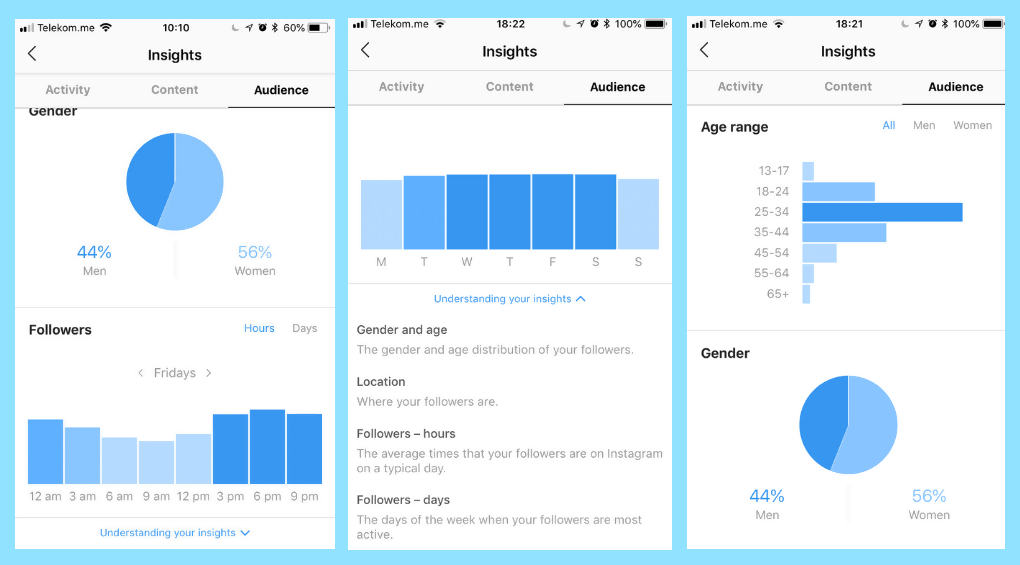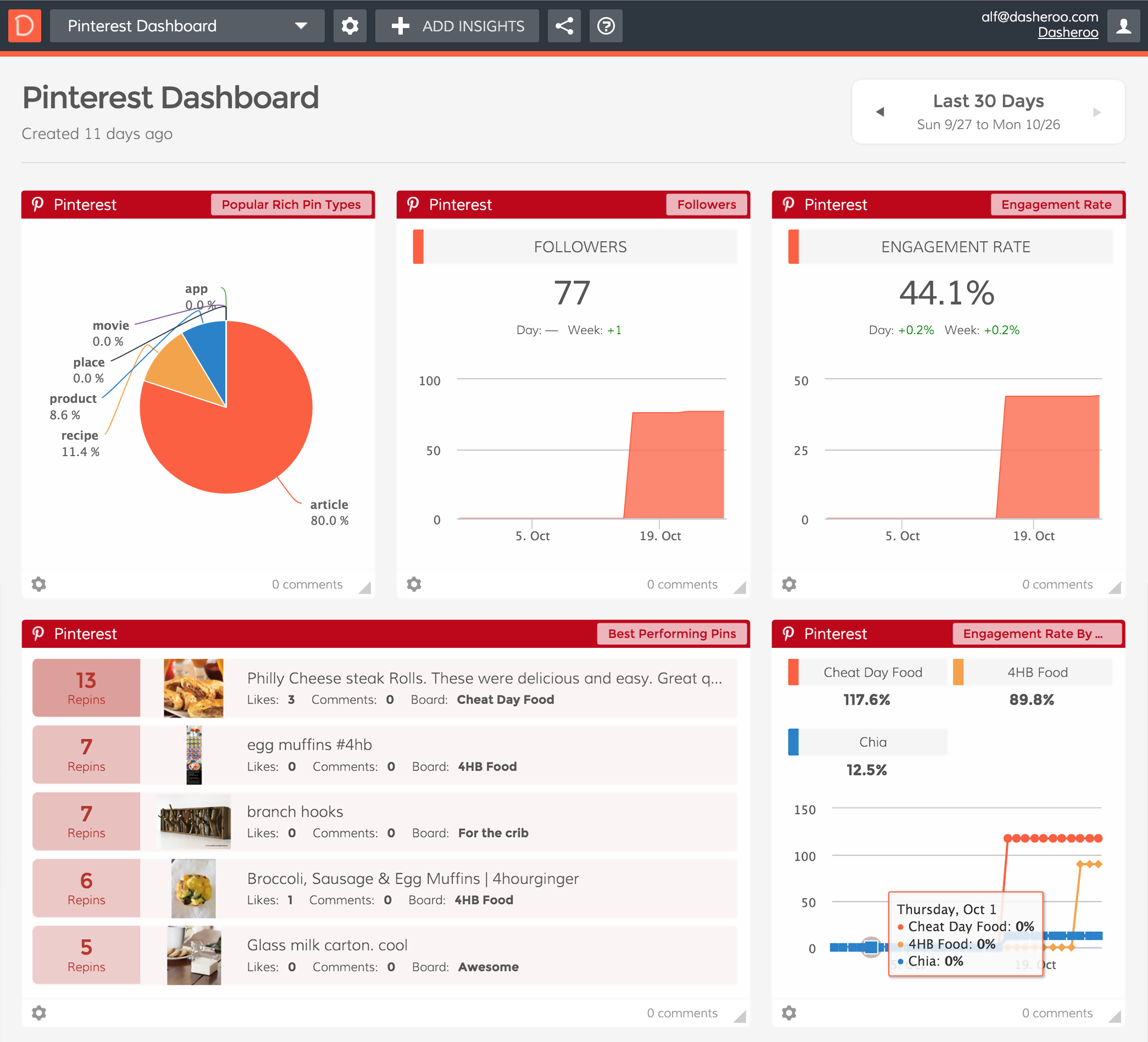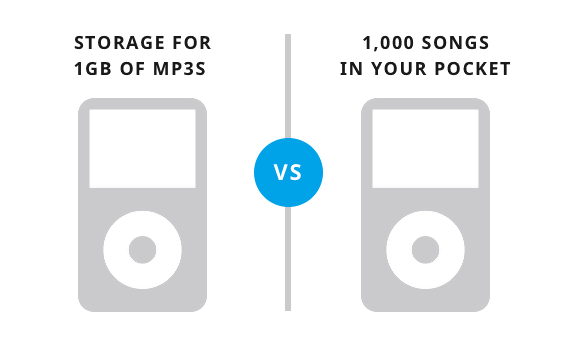You can’t market your product to everyone out there, and the truth is, you don’t need to. There is always a specific group of customers that are the perfect fit for your product and all you need to do is find out who they are so you can start targeting a market.
Similarly, creating the perfect product isn’t all it takes to sell it. If you don’t advertise it to the right people, who will buy it? Thus, it is crucial for a business to research, select and target the right market segment.
Here’s the ultimate guide on how to target the right market:
- Assess your current customers
If you’re an already established business, this is your first task.
Use your existing customers to understand why they buy your product. This can help narrow down defining characteristics which can then be used to attract customers with similar attributes. And how does a business define these characteristics? Read the next step!
- Use demographics & psychographics to help you segment your market

Source: WordStream
Collecting information about customers and gathering it in a database can help track trends and averages. You can collect this information through surveys, questionnaires, feedback and even focus groups if you’re going for detailed research.
Pro tip: Don’t add too many questions in opt in forms, it’ll only annoy customers, thus leading to fewer subscribers
Below are the basic demographics and psychographics you can use to collect customer information. Let’s take the example of an online, home-based clothing business:
- Location
Thanks to courier companies and increasing globalization, product shipping is no longer an issue. Businesses can easily cater to national and even international customers. Thus, most businesses can cater to a wide variety of customers location wise.
However, international companies have to take into account time zones. Social ads and posts have to be scheduled at hours with the highest visibility, so you’ll need to schedule each ad separately if you’re targeting the international market.
- Language
Languages used to be a great barrier restricting communication between businesses and customers. However, online businesses can use tools like Google translate to communicate with customers instantly. This is especially helpful because not all people living in the same area speak the same language or dialect. Tools like these make targeting a market much easier.
- Purchasing Power
This is a characteristic that can be used to narrow down your target audience as the pricing of your product determines which category of customers you should target. The best example of this is cars. Ferrari and Bugatti target the highest-income group which consists of brand-conscious customers whereas Tesla and Toyota offer a variety of cars that cater to budget conscious customers.
- Likes & Dislikes
You could actually use your customers’ interests to classify your target audience into a group e.g. most people who like the TV series Modern Family will also like the TV series Brooklyn Nine-Nine. Thus, the marketing team of either show can target the viewers of the other show as they both fall in the comedy genre and viewers will likely be interested in watching both.
- Occupation
This is quite an underutilised demographic. Let’s take the example of a company that produces bed accessories for special needs. Not only should the products be targeted towards senior citizens (being the clear target audience for the company’s products), but they can also be targetted towards dentists and people with similar occupations as they are known to suffer from neck and back pains due to their work.
3. Study your competitors’ target market

If you’re struggling to target the right market, it always helps to look at who your competitors are targeting. Gather the following data:
- Are your competitors going after the same market as you are?
- Have your competitors targeted segments that you didn’t consider?
- How are your competitors positioning their brand in the market?
While detailed research on your competitors may not be available, a general outlook on how they interact with their customers can be beneficial in understanding which strategies are effective.
The solution isn’t to go after your competition’s customers. Instead, try to look for a market segment that they may have missed so that you can fully benefit from it. Attracting new customers is much easier than getting them to switch from another brand.
Learn more about customer retention.
- Use analytical tools to your advantage
Not only has social media been a great way to interact with customers, but it also provides businesses with analytical tools that provide a number of advantages. Here are a few examples:

Source: Social Media Examiner
Here, you can see exactly how much revenue is being generated through purchases. The dates where revenue is low can be looked into to figure out the cause of fewer purchases. Usually, customers are busy during weekdays so revenue falls short.
To combat this, you can offer discounts and promotions during slow business days to boost revenue. The best example is Dominos Wacky Wednesday where customers can avail the Buy 1 Get 1 free deal. I know for sure that even if I wasn’t planning on takeout on a weekday, I’d still consider a good deal!

Source: Later
Instagram breaks down results based on demographics like age and gender, which will make targeting a market much easier for you. You’ll be able to determine whether your social posts and ads are popular among males or females, as well as a specific age group. Use these results to focus on the audience that engages most with your profile.
Suppose you have a makeup brand. Most brands focus social media ads on women only, but makeup has always been a necessity for some men, especially in the entertainment industry. Technology has allowed us to market products at minimal costs, so as a business you need to take advantage of that and cater to even the smallest of market segments that are potential customers.

Source: Dasheroo
A Pinterest profile is a great way for businesses to engage with customers on a personal level. Most customers seek inspiration from the app, so you can learn more about customer interests and characterise them accordingly.
The customers who follow you regularly are the ones you should focus on the most; their interests can be incorporated into your products e.g. if you own a clothing brand and your followers are raving about embroidered fabrics, add a collection of embroidered tops into your new line. Not only will it help generate more revenue, but it will also ensure customer loyalty.
Learn more about how to create a powerful social media marketing strategy.
- Make your strategy customer-oriented
Consider the following questions:
- Is your product/service providing value to customers

Source: WordStream
Most startups fail because even though their product works just fine, customers don’t find the need for it. Sell your products by marketing their benefits and not their features.
Would a person rather buy a phone from you if you told them it has a Snapdragon Processor or that’s it’s fast? The latter, because most people don’t understand the lingo of the tech industry but what they do want is a phone that works well. Similarly, they would buy the iPod in the picture above if you told them how many songs they could store in it instead of having to figure out for themselves.
Create value by giving people a reason to buy your product instead of just stating facts.
- Which customers are benefitting from your product/service?

Let’s take the example of Apple’s iPhone XS and Samsung’s Note 10.
Both phones are high-end and have a similar price tag. However, customers buy them for entirely different reasons. iPhone users usually prefer a user-friendly device with a few of the most important features i.e. the best camera, appearance and speed.
Note users, on the other hand, buy the phone for the abundant amount of features packed into a single device. They love the complexity that the phone has to offer, as opposed to the simplicity of the iPhone.
Thus, each company will focus on customers based on what type of features they are looking for. There is always a specific market segment that benefits from your product or service.
- Are you solving your customers’ problems?
Like I said before, your product may be great but it needs to be of some use to customers. Suppose there are two brands selling silverware. One sells a standard knife whereas the other sells knives with interchangeable heads, each for a different purpose. Even if the latter is more expensive, most customers will go for it as it is more convenient and fulfils each use in the kitchen.
- Focus on the niche market
Customers are no longer at mercy of big corporations. Since technology has made it easier for basically anyone to start a business, there are businesses now catering to every need of customers.
There are so many industries that have been introduced to cater to consumers. There is a whole new pet industry because people are willing to pay a good amount of money not only on their pet’s health but also grooming, accessories, food and playtime. You could even get a pet sitter if you’re going away for a while! Here are a few more niche markets which have inspired people to quit their jobs and do what they really love.
The point is, your strategy and product should be focused towards a very specific group of people that will gain the maximum benefit out of it. This will also help you promote a Unique Selling Proposition and stand out from competitor products.
Learn more about How to set up a niche business.
- Define your brand’s personality
Customers have allowed brands to coexist with them online, and a brand personality can help you create a deeper and more personal connection with your customers. A clear brand personality will lead to stronger brand recognition.
But how do you do that? Create a target market statement. Zipcar, a car-sharing company, issued a brand positioning statement that defined its target market:
“To urban-dwelling, educated, techno-savvy consumers who worry about the environment that future generations will inherit, Zipcar is the car-sharing service that lets you save money and reduce your carbon footprint, making you feel you’ve made a smart, responsible choice that demonstrates your commitment to protecting the environment.”
The interesting thing is that Zip-car is not targeting all the residents in the cities that it operates. Neither is it targeting people who don’t have a car. It specifically targets people who are educated, concerned about the future of the environment and comfortable with technology.

Source: UC Davis
Even though the company isn’t targeting a large number of people, it’s targeting a group with specific characteristics that competitors like Grab and Lyft aren’t targeting. Thus, it is likely to attract most of them as potential customers, and with increasing climate change, more and more individuals are becoming concerned about the environment. With Zipcar’s bold brand statement, it will be the first thing that comes to such a person’s mind when looking for a car-sharing service.
Conclusion
The fact of the matter is, you’ll need to constantly evaluate your target market. Since customer interests change, the market changes and technology is evolving so much, products need to be revamped accordingly.
Targeting the right market is not an easy job, but it can be done. It requires an abundant amount of research, the right analytical tools and interaction with potential market segments.
